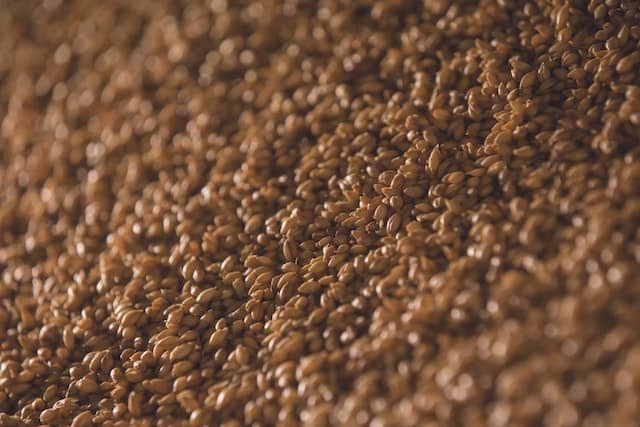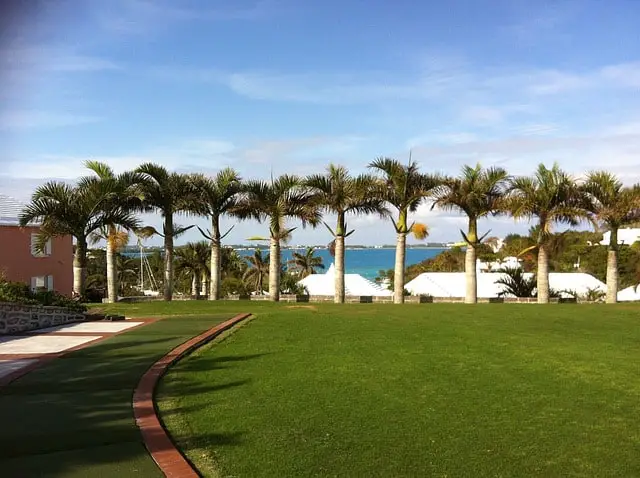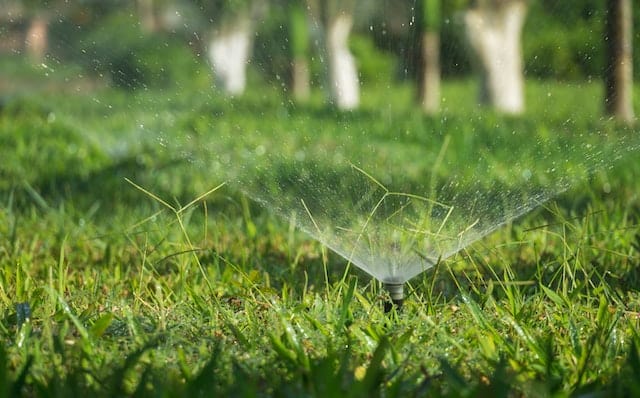Bermuda grass is a sturdy grass that has a good temperature tolerance and quick recuperation speed. Its natural attributes make it an excellent choice for lawns and yards, but did you know that there are different ways you can help spread your Bermuda grass to spread?
However, Bermuda grass can be quite invasive and requires regular maintenance to keep it from spreading uncontrollably and overtaking other areas of your yard.
Taking care of Bermuda grass is crucial for its healthy spread. Regular maintenance helps prevent it from becoming invasive and overtaking other areas of your yard. By understanding the specific requirements of Bermuda grass, you can ensure its optimal growth and spread.
Keep reading, we’ll explain everything you need to know about how to get Bermuda grass to spread.
How to Get Bermuda Grass to Spread

Bermuda grass loves warm temperatures and grows rapidly at the start of spring. As long as it has plenty of water and nutrients, it will naturally grow and attempt to take over the entire patch of land. However, when it comes to spreading, you must familiarize yourself with its properties. Mainly, the following things.
- It prefers the warm climate and looks the best in the summer
- It needs direct sunlight and can mostly tolerate hot days easily
- It doesn’t like being soggy, it instead prefers soil with good drainage
- It is best suited for lawns in the southern US but can work anywhere if given the right conditions
- It has great resistance to droughts, salt, and trampling
- It needs a few months of high maintenance
The Bermuda grass spreads in three ways, it’s a stolon-type grass but it also produces rhizomes and seeds. The process for each of them is a bit different though, let us take a look at them.
1. Stolons
Bermuda grass has long protrusions that look like roots, growing parallel to the ground from the main stem to a second grass stem. These protrusions are called stolons.
A stolon grows from the base of the grass stem and travels away from the plant. The stolon spreads and forms new blades of grass some distance away from the original blade of grass.
Each stolon can produce 3 to 4 buds of new grass blades. After the new blades have formed, the stolons sink into the ground and turn into an extra clump of roots.
The new grass will grow and produce stolons again, repeating the cycle. Even if the stolons connecting the two plants are cut, the individual plants will continue thriving.
2. Rhizomes
The other method a Bermuda grass spreads is by using rhizomes. Rhizomes are like stolons, only they’re underground and don’t form buds directly. The roots of the plant expand outward like stolons and form a new clump of roots. These roots then make a bud and a new blade of grass emerges near the first one.
3. Seeds

Bermuda grass seeds are the slowest method you can use to spread Bermuda grass across your lawn. You can buy a bunch of Bermuda seeds and manually spread them across your lawn but it will take some time for the seeds to germinate and grow into blades of grass.
Bermuda grass can also produce seeds to spread but it usually takes a long time before it can produce seeds that can be replanted or spread.
You will need to let your Bermuda grass grow 1ft in height or more if you want to reliably spread the grass using seeds. In most cases, this method isn’t recommended but it can work if you want.
Factors That Affect Bermuda Grass Spread
Depending on the method used for propagation, the speed of the growth of the Bermuda grass will vary. It also depends on other factors like temperature, season, water, nutrients, etc. The Bermuda grass can grow up to 0.5 inches per day if given the right conditions.
If you use seeds, you might need to wait a few months before you see a sizeable patch of grass or be able to walk on it. Your Bermuda grass can grow quickly as long as the following requirements are met.
- The grass is planted sometime before spring, ideally between late January to early March
- Warm temperature with plenty of direct sunlight is available every day during spring
- Soil pH between 5.8-7.0, Bermuda grass can tolerate alkaline soil conditions but won’t grow as quickly in them
- The soil is well-fertilized with extra nitrogen. The best time to apply fertilizer is 1-2 months before the first frost
- The lawn is watered 1 to 1 ¼ inches per week during spring and summer
Preventing Uncontrolled Spreading
While Bermuda grass is desirable for its ability to spread, it can become invasive if not properly managed. Implementing preventive measures can help control its spread and maintain a well-maintained lawn.
These measures include regular mowing, using barriers or edging, and monitoring its growth to prevent encroachment in unwanted areas.
Managing Bermuda Grass in Different Climates

Bermuda grass is well-suited for the southern US climate, but it can also thrive in other regions with appropriate care. Understanding how to manage Bermuda grass in different climates will help you adapt its spreading techniques based on the specific environmental conditions of your area.
Consider factors such as temperature variations, rainfall patterns, and soil characteristics when implementing strategies to promote its spread.
Overcoming Challenges in Bermuda Grass Spreading
Spreading Bermuda grass can sometimes pose challenges that need to be addressed. These challenges may include dealing with specific soil conditions, combating weeds or fungus infestation, and preventing the invasion of other grass species.
By identifying these challenges and implementing effective solutions, you can overcome obstacles and achieve successful Bermuda grass spreading.
Filling Bare Spots With Bermuda Grass
If you want your Bermuda grass to propagate and fill the bare spot in your lawn, follow these steps.
- Dig up the bare area to loosen the soil for your Bermuda.
- Water the area, and make sure the soil is well drained.
- Take some stolons or rhizomes from the active area and plant them into the bare spot. Be sure to do this during the growing season and only use stolons or rhizomes that are still actively growing.
- Water the stolon or rhizomes after planting and wait.
- If the weather is suitable, Bermuda grass will quickly take over the bare spot. However, your Bermuda grass can become dormant if the weather is cold, dry, or extremely hot.
Ways to Make Bermudas Grass Spread
Bermuda grass doesn’t need much help to spread but you can help accelerate the process by following these simple tips.
1. Propagate by Hand
Bermuda grass seeds can take up to 16 weeks or a year to mature and grow. If you want your Bermuda to spread quickly, you need to use Bermuda sprigs. Be sure to plant them during early spring so that they spread to all the corners of a blank spot quickly.
You can also dig up a small patch of existing Bermuda grass and replant it at the center of the bare spot. The Bermuda grass will form new roots within a week or two and quickly spread to take over the available area.
Newly rooted Bermuda grass can grow up to ½ inch every day as long as there’s plenty of water and nutrients available.
2. You Can Overwater

Bermuda grass ideally likes to be watered 1 inch per week. However, it’s a hardy plant and can thrive even when overwatered. During hot summer days, overwatering can help Bermuda grass spread faster. Overwatering can help the Bermuda grass spread better on dry days.
Keep in mind that you should only overwater if the temperature is over 85F and if it hasn’t rained in the past week. To overwater, you can set your sprinklers to water the lawn for 30-45 minutes.
3. Use Plant Hormones
If you’re transplanting stolons, rhizomes, or cuttings of Bermuda grass, you can use plant hormones to shorten the rooting time and hasten the growth.
You can smear plant hormones on the cuttings, stolons, or rhizomes before replanting them. Don’t apply too much of it though, as it can stunt the growth of the grass in excess.
4. Critical Growth Considerations
Bermuda grass is very invasive and if left unchecked, it can find its way into your flowerbeds and steal the nutrients from other plants. While it is generally an apex species in the lawn, it is still vulnerable to other invasive flora and fungi.
Weeds like crabgrass can spread and take over small patches in your lawn and take nutrients away from your Bermuda grass. Bermuda grass is also vulnerable to fungus infestation. Before you begin helping your Bermuda grass spread, make sure that it is free of fungus and that there are no patches of weed.
You can use pre-emergent and fungicides to prevent weeds and fungi from entering your lawn.
5. Regularly Mow and Dethatch

For a healthy Bermuda grass, you need to mow it regularly and keep it between 1 to 1.5 inches. This is only required during the spring and summer months when the growth is at its peak.
Doing so might create thatches that need to be removed. Thatches might prevent Bermuda grass from growing stolons or rhizomes.
During winter, your Bermuda grass will go into a dormant state and stop growing. During this time, don’t use any fertilizer or water. However, if you find any invasive weeds, be sure to eliminate them.
As a life hack, don’t mow your Bermuda grass starting a week before fall. This will cause your Bermuda to grow up to 3-4 inches before it dies during fall. The long blades of the dead Bermuda grass will form a beautiful golden coat on your lawn adding to the overall aesthetics even during the fall season.
6. Promoting Bermuda Grass Growth with Fertilization
Fertilization plays a significant role in promoting Bermuda grass growth and spread. By providing the grass with essential nutrients, you can ensure its vigor and ability to fill in bare spots.
Understanding the appropriate fertilization schedule, types of fertilizers to use, and proper application techniques will enhance the growth and spreading potential of Bermuda grass.
7. Utilizing Advanced Techniques for Bermuda Grass Propagation
While the basic methods of stolons, rhizomes, and seeds are effective for Bermuda grass spreading, advanced techniques can further enhance the process. These techniques may involve using plant hormones to stimulate growth, employing specialized equipment for mechanical spreading, or utilizing advanced seeding methods.
Exploring these advanced techniques can provide additional tools for promoting Bermuda grass spread.
More similar posts:
Outro
Hopefully now you have all the info you need on how to get Bermuda grass to spread. Bermuda grass can spread very quickly as long as the climate is favorable for it.
While it is best suited for the southern US climate, you can grow it practically anywhere with a bit of care. Just make sure you add some fertilizer to your lawn before fall for a great patch of Bermuda next year.
Beyond spreading, maintaining the overall health and appearance of Bermuda grass is essential for a beautiful lawn. Proper mowing techniques, dethatching when necessary, and addressing seasonal changes play a crucial role in ensuring the long-term success and attractiveness of your Bermuda grass.
Frequently Asked Questions
How can you promote the spread of the Bermuda grass?
For best growth, you need soil with a pH between 5.8-7.0 and a mowed lawn without thatch. A nitrogen-rich soil will boost the growth of the grass. Bermuda grows the fastest during summer so be sure to water it often in summer.
What makes the Bermuda spread?
Bermuda grass spread through stolons, rhizomes, or seeds. Stolons and rhizomes are the fastest way a Bermuda can take over a patch while seeds can take up to a year to form mature Bermuda grass blades.
Can Bermuda grass overtake other grass?
Different grass has different growth patterns so they might not overtake each other, but the Bermuda grass can easily overtake some weaker grasses like the fescue grass. Bermuda is very likely to overtake flowerbeds though so keep it far away from them.

Hey, I’m Lisa and I’ve been an avid gardener for over 30 years. I love writing, talking and living in the garden! Feel free to connect with me on my socials below

